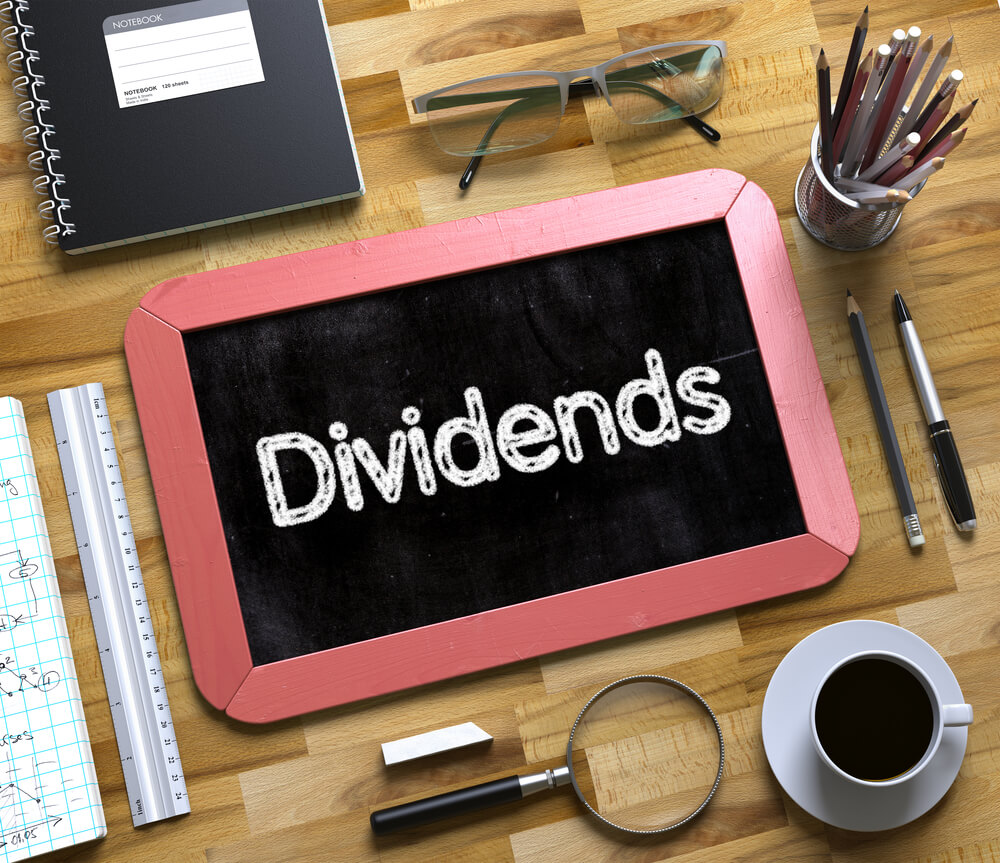A major benefit of dividend paying stocks is the constant cash flow. The cash received from the dividend payments returns investors with a certain return despite what happens to the stock market overall or in the greater economy.
What is Inflation?
Inflation occurs when a currency becomes worth less. This happens naturally in economies around the world. In the United States, the inflation rate is measured by the consumer price index, commonly referred to as the CPI. The CPI measures the cost of a “basket of goods” each month. Over time, the cost of the goods will slowly rise. According to the Bureau of Labor Statistics, the government organization responsible for measuring the CPI, inflation in the United States has ranged from -2% per month to slightly over 4% per month (at an annual rate) over the last ten years. Outside of 2009, however, it has always trended upward.

Inflation Example
Assuming a 3% annual inflation rate (this is an arbitrary number chosen for this example, it is not based on the current inflation rate), the cost of everything you buy is going to rise by 3% per year. If a loaf of bread cost $1.00 at the beginning of the year, it will cost $1.03 at the end of the year. While $0.03 doesn’t sound like a huge number, imagine if you have an inflation of 3% over the next 20 years; your loaf of bred will cost $1.81. Inflation has the reverse effect on financial instruments. If you have a dollar at the beginning of the year and leave it in your wallet, it will still be worth a dollar at the end of the year. However, you will only be able to buy what .97 cents would have bought you at the beginning of the year.
Dividend Investing vs Inflation
This rate impacts your investments as well. If you own shares of a non-dividend paying stock that rises 3% over the year, on the surface you have made a 3% return. 3% is better than no return, but did you really earn 3%? In the situation above, based on a 3% interest rate, you actually came out even. Your 3% gain was cannibalized by the inflation rate.
If you own shares of a dividend paying stock, the situation is different. The dividend acts as a hedge, or protection, against inflation. If you own a stock that pays a 2.5% annual dividend and rises 3% over the year, you have earned a 5.5% annual return. After subtracting 3% for inflation, you have earned a 2.5% annual return. The dividend accounted for your entire return over the calendar year.
Because of the way dividend stocks protect against inflation, they can also be a preferred investment over bonds, which only pay a fixed interest rate that does not change with inflation, or bank accounts, which have less risk but pay a much lower return.
I have seen success with several dividend stocks in my own portfolio. Blue chip stocks like Walmart and General Electric are generally less volatile than the overall markets and pay a sustained dividend just below 3%. This will not always beat the inflation rate, and the stock price will rise and fall impacting your total return, but the cash generated by your stock ownership may offset or even beat inflation.
Of course, it is very rare that a particular stock will pay a dividend equal to the inflation rate. It is possible for a dividend to beat inflation or for a dividend to be lower than inflation. Either way, if a company has a strong cash flow position and can sustain dividend payments, a dividend stock is a great way to offset the impact of inflation on your investment portfolio.
The key is to look at dividend stocks that increase their dividend on a consistent basis. Dividend achievers have been increasing the dividend payout for at least 10 consecutive years. With a constant increasing dividend payout, you will be assured to cover more than the inflation rate over the long term. This enables you to enjoy the fruit of your portfolio and not to be worried about inflation.




